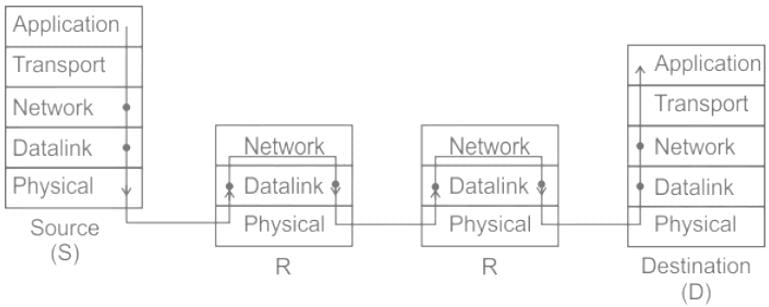Test: Computer Networks - 2 - Computer Science Engineering (CSE) MCQ
10 Questions MCQ Test GATE Computer Science Engineering(CSE) 2026 Mock Test Series - Test: Computer Networks - 2
A message consisting of 2400 bits is to be passed over the Internet. The message is passed to the transport layer which appends a 150-bit header, followed by the network layer which uses a 120-bit header. Network layer packets are transmitted via two networks, each of which uses a 26-bit header. The destination network only accepts up to 900 bits long. The number of bits, including headers delivered to the destination network, is
Suppose that code has the following four valid codewords:
00000000
11001100
00110011
11111111
What is the maximum number of errors that can be corrected for the above code?
Consider an IP packet with a data length of 4400 bytes. TCP header is of 40 bytes while that of IPv4 header is 20 bytes. The packet is forwarded to an IPv4 router that supports MTU of 900 bytes. Length of the IP header for outgoing fragments is 20 bytes. Assume that the fragment offset value stored in the first fragment is 100.
The fragmentation offset value of the penultimate fragment is _____.
What flavour of Network Address Translation can be used to have one IP address allow many users to connect to the global internet?
A TCP message consisting of 2100 bytes is passed to IP for delivery across two networks. The first network can carry a maximum payload of 1200 bytes per frame and the second network can carry a maximum payload of 400 bytes per frame, excluding network overload. Assume that IP overhead per packet is 26 bytes. What is the total IP overhead (in bytes) in the network for this transmission?
An Aloha network uses an 18.2 kbps channel for sending message packets of 100 bits long size. Calculate the maximum throughput.
What is the maximum efficiency of slotted aloha at G = 1?
Assume that source S and destination D are connected through two intermediate routers labeled R. Determine how many times each packet has to visit the network layer and the data link layer during a transmission from S to D.
Consider a source computer (S) transmitting a file of size 106 bits to a destination computer (D) over a network of two routers (R1 and R2) and three links (L1, L2, and L3). L1 connects S to R1; L2 connects R1 to R2; and L3 connects R2 to D. Let each link be of length 100 km. Assume signals travel over each link at a speed of 108 meters per second. Assume that the link bandwidth on each link is 1Mbps. Let the file be broken down into 1000 packets each of size 1000 bits. Find the total sum of transmission and propagation delays in transmitting the file from S to D?
What is the maximum efficiency of pure aloha at G = 1/2?
|
55 docs|215 tests
|
|
55 docs|215 tests
|


























